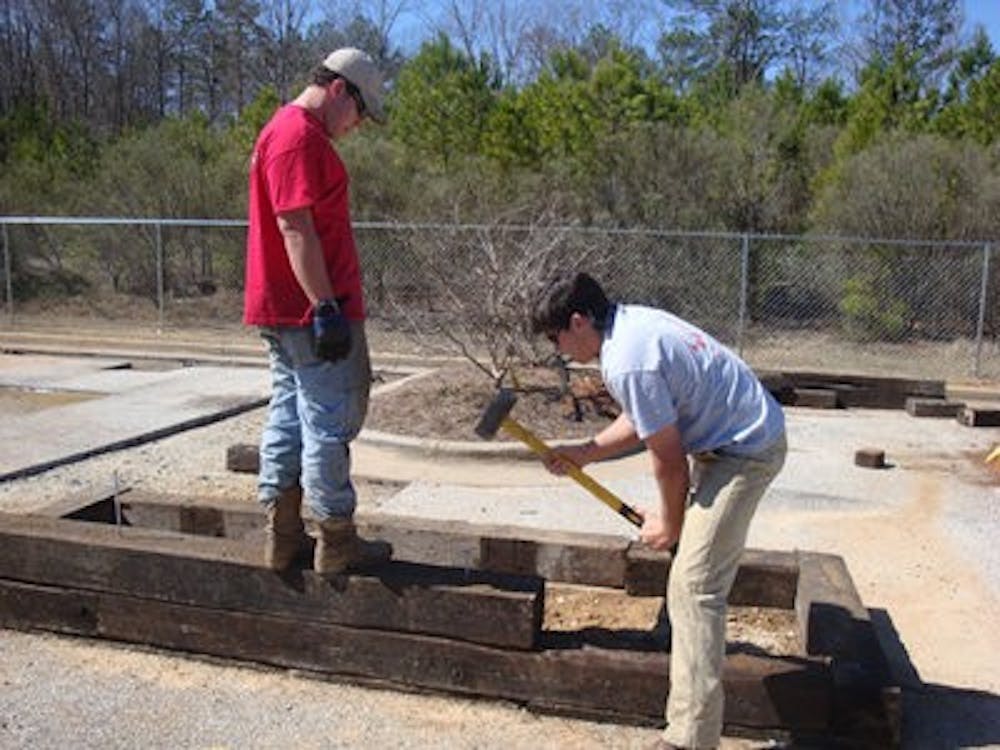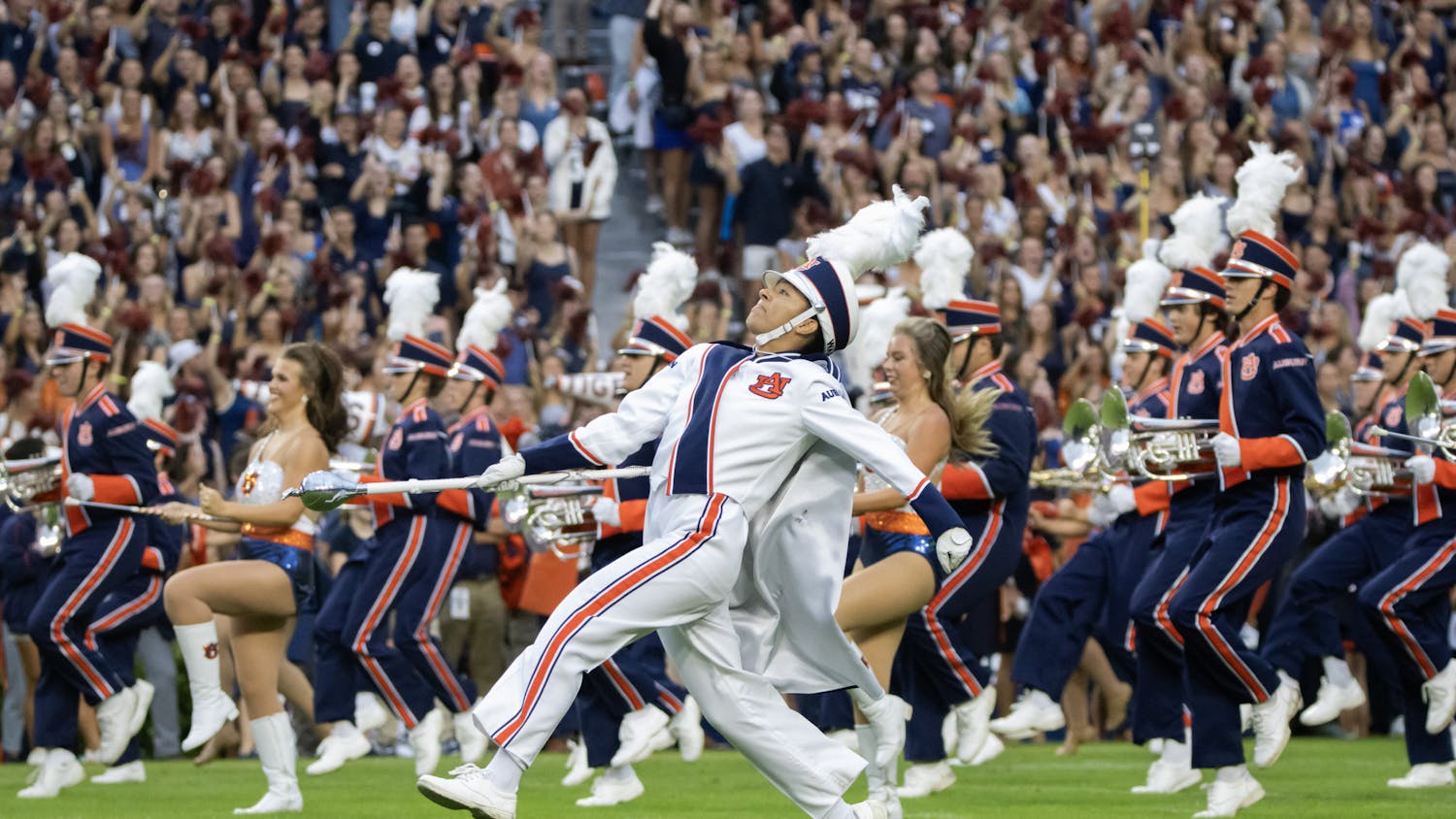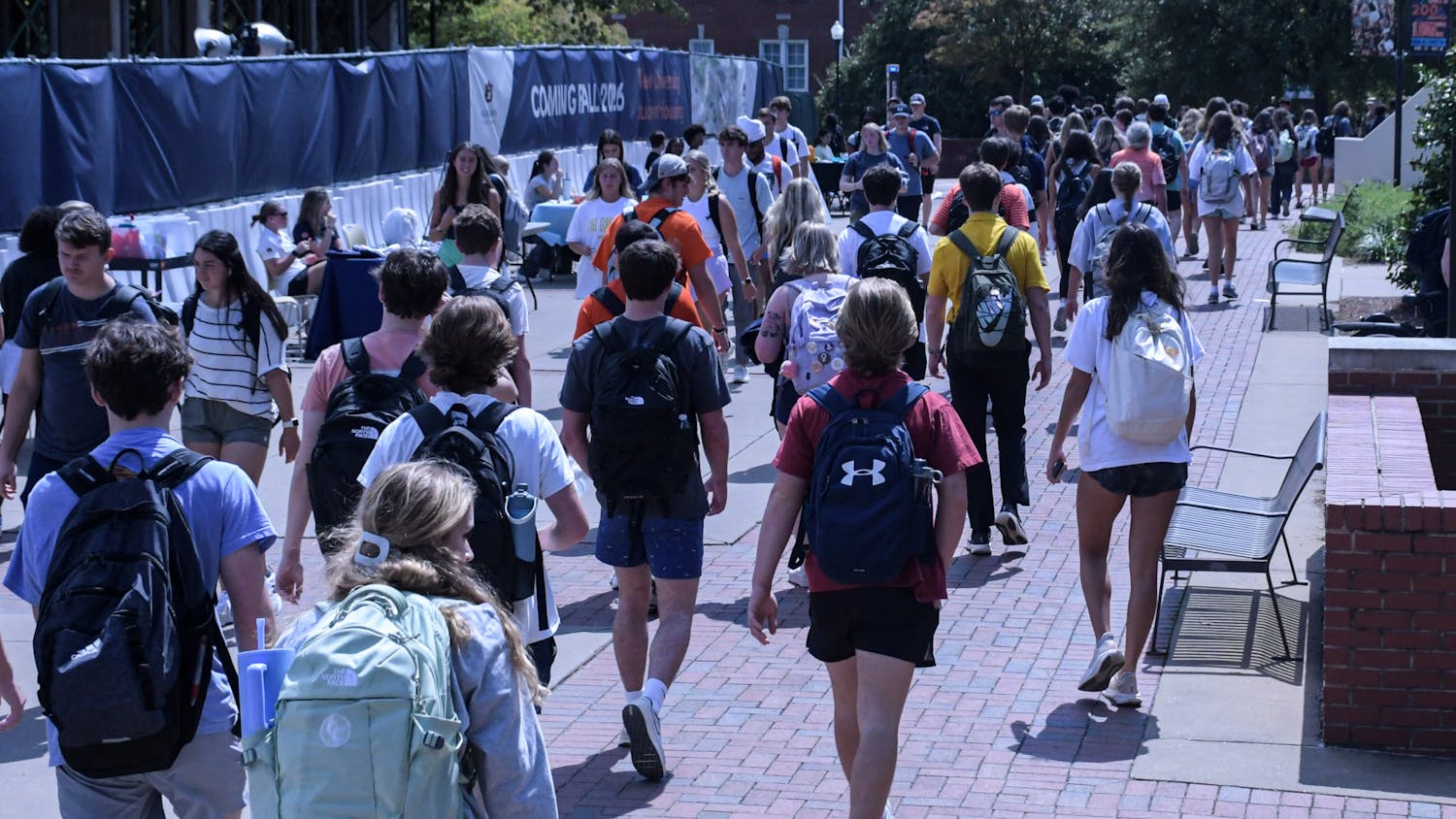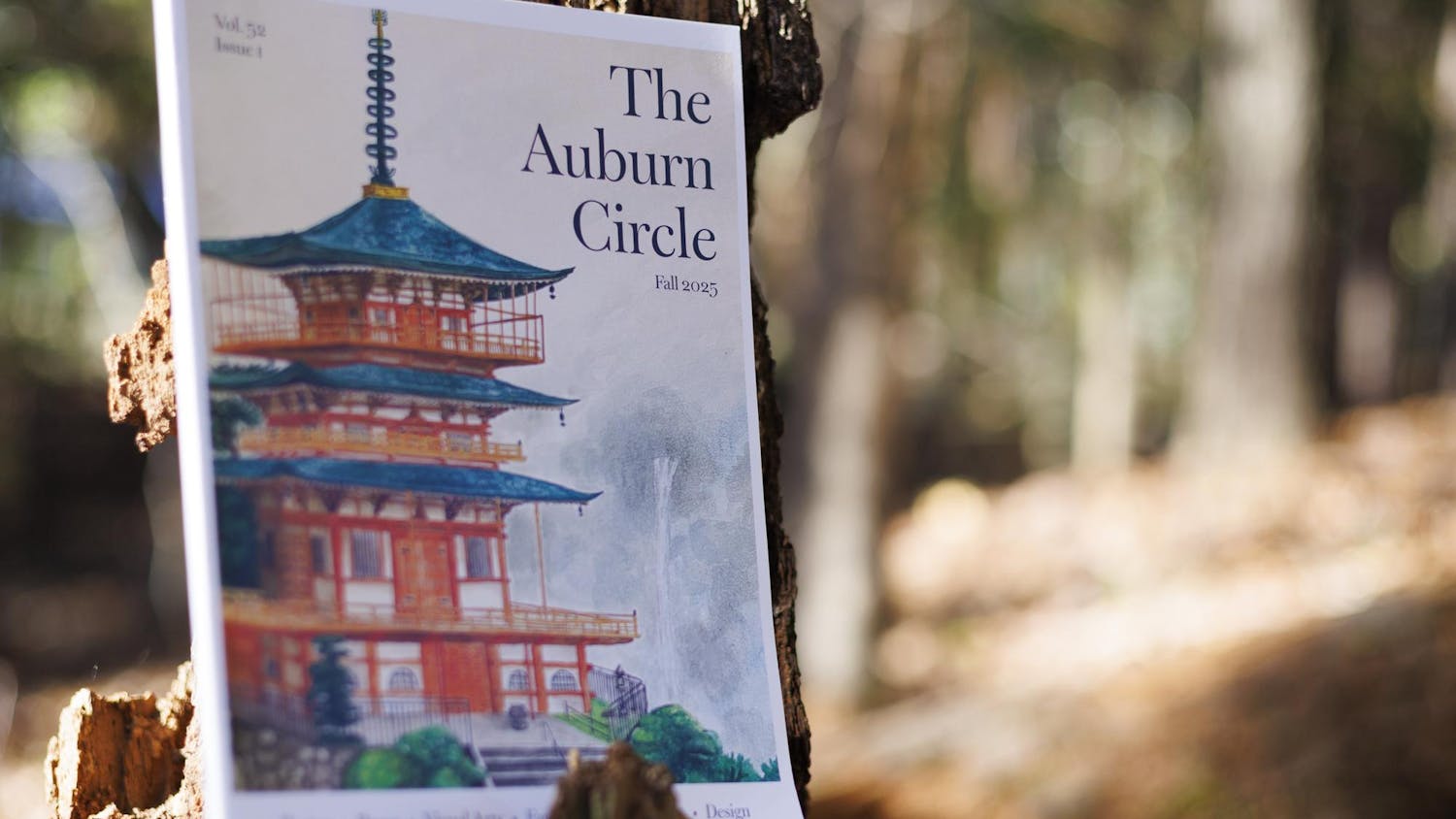One campus group is putting the park in parking lot.
Civic Engagement in the Built Environment is creating a green space for the East Alabama Mental Health Center.
"We call it unpaving the parking lot and putting up paradise," said Linda Ruth, building science professor and one of CEBE's main coordinators.
CEBE is an interdisciplinary outreach organization that gets students involved with community projects.
It includes a class of four to five students who make up what Ruth calls the "core" of the program.
In addition, students from other disciplines are consulted as needed on different projects.
A veterinary student, for example, is involved with the plans for a pet therapy element for the Lee County Youth Development Center.
"It gives students the opportunity to actually get out and work, which I think is somewhat lacking sometimes," said Barkley Mallette, senior in building science. "A lot of kids come into college and they don't have a lot of experience actually going out and working on projects."
A staff member at EAMHC requested a grant from Home Depot with the goal of constructing a park in place of the existing parking lot.
A small grant was awarded, and Anne Penney, executive director of EAMHC, then contacted CEBE to make the park a reality.
"I think the consumers will love being able to be outside in a therapeutic space," Penney said. "They can relax, they can grow the plants and flowers that we're going to use there--so it's going to be both a relaxing and maybe meditative space, but also sections of it will be used for horticulture therapy."
Elliott Miller, senior in building science, said he and Mallette have been spending 30 to 40 hours per week at the construction site for the park, which will be finished sometime in April.
"As of the last couple weeks it's really great just to be outside--getting a little bit of a suntan and being outside and working with my hands rather than sitting in the classroom," Miller said.
Classroom work is not an integral part of this program. Students are involved in designing plans, acquiring supplies and donations, making presentations to clients and actual construction of projects.
Penney said she's thrilled by the progress CEBE has made on the project.
"If it's done by the end of this semester, that would just be fantastic," Penney said.
Penney was also involved in the selection of benches to be placed in the park, which were built as a competition between Structures III students.
Eleven teams of students were charged with building benches primarily out of concrete, but also with the option to include other materials. Seven were chosen to be placed at the park.
Seth Slatton, junior in building science and team leader of the winning team, said his team was surprised when its bench won.
"I had already picked out a place to put it somewhere else--I really didn't think they were going to accept it because of the honeycomb on the legs," Slatton said. "I think some people overall had some better looking ones."
Alex Behringer, senior in building science and another member of the winning team, said he thought the bench competition was better than in previous years.
"We thought it was kind of cool that we were able to learn more about concrete and display it as a service project," Behringer said. "Classes in the past just kind of did whatever furniture piece they wanted to do, and it really didn't serve so much of a purpose other than having a new piece of furniture that no one really wanted."
Students had only three weeks to build the benches. Behringer said they first designed their bench in a 3D design program and then built a formwork in which to pour the concrete.
Other elements of the park include a water feature, landscaped planters and empty planters for use by the consumers. Ruth said this project has also focused on sustainability.
"Instead of tearing up all the asphalt and then coming back and pouring a hard surface where we wanted it, we cut the asphalt--so we just sort of pulled out parts of the parking lot, and then we cut the parking lot up," Ruth said.
They recycled the extra asphalt, using some to extend the existing sidewalk and some as drainage for the planters.
"Taking a parking lot and making it into a space that people can actually enjoy--I would have never really been able to visually see that," Mallette said. "But now that I've gotten to work on it, it's been pretty neat."
Ruth said she hopes CEBE will continue to grow. Her goal is to involve enough students from different programs that each student can be involved with only one or two projects instead of every student contributing to every project.
"I think as Professor Ruth continues to develop the program, it'll really benefit some individuals throughout architecture and building science," Miller said.
CEBE is already benefiting students involved now.
"I really enjoy actually doing stuff for the community," Mallette said. "I haven't had a lot of chance to do a lot of community service throughout college because I've been so busy with school and everything. So to be able to actually go out and give back to the community, I think it's a good program."
Do you like this story? The Plainsman doesn't accept money from tuition or student fees, and we don't charge a subscription fee. But you can donate to support The Plainsman.





